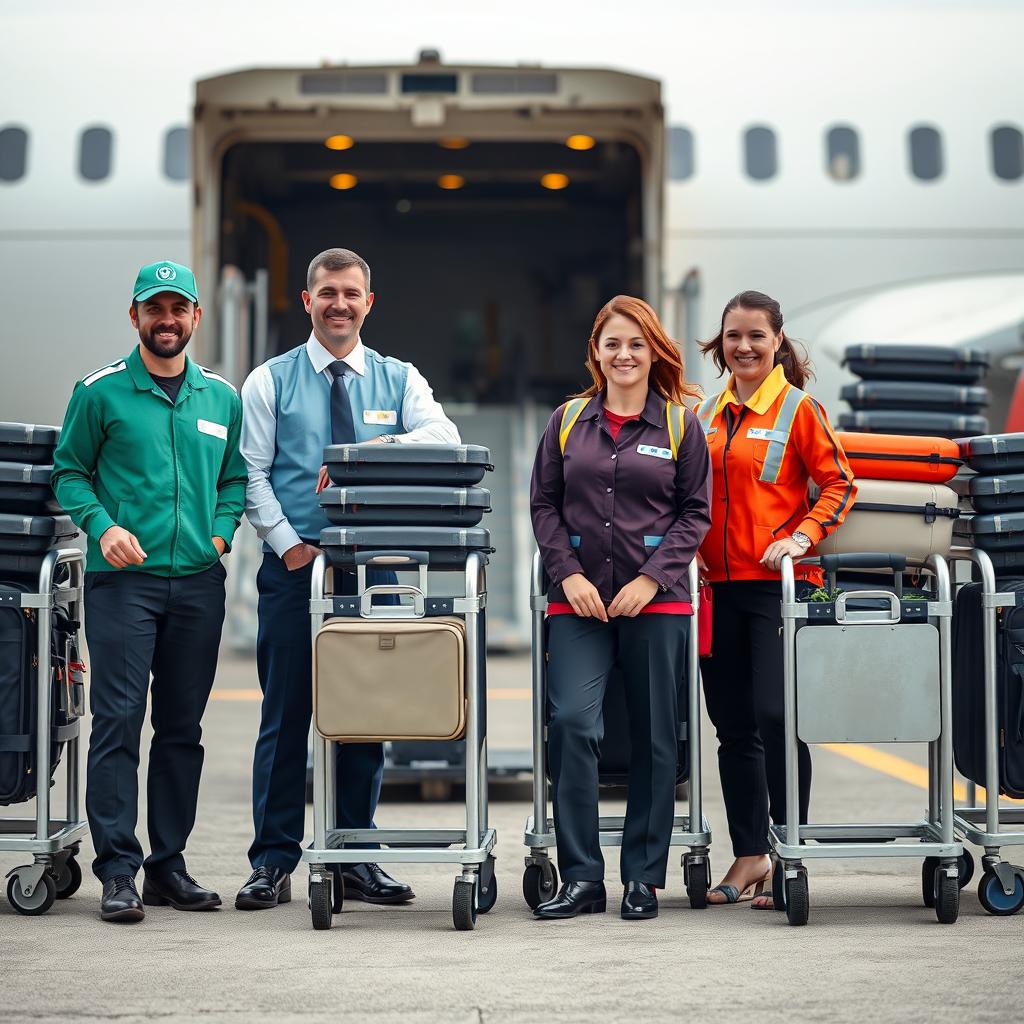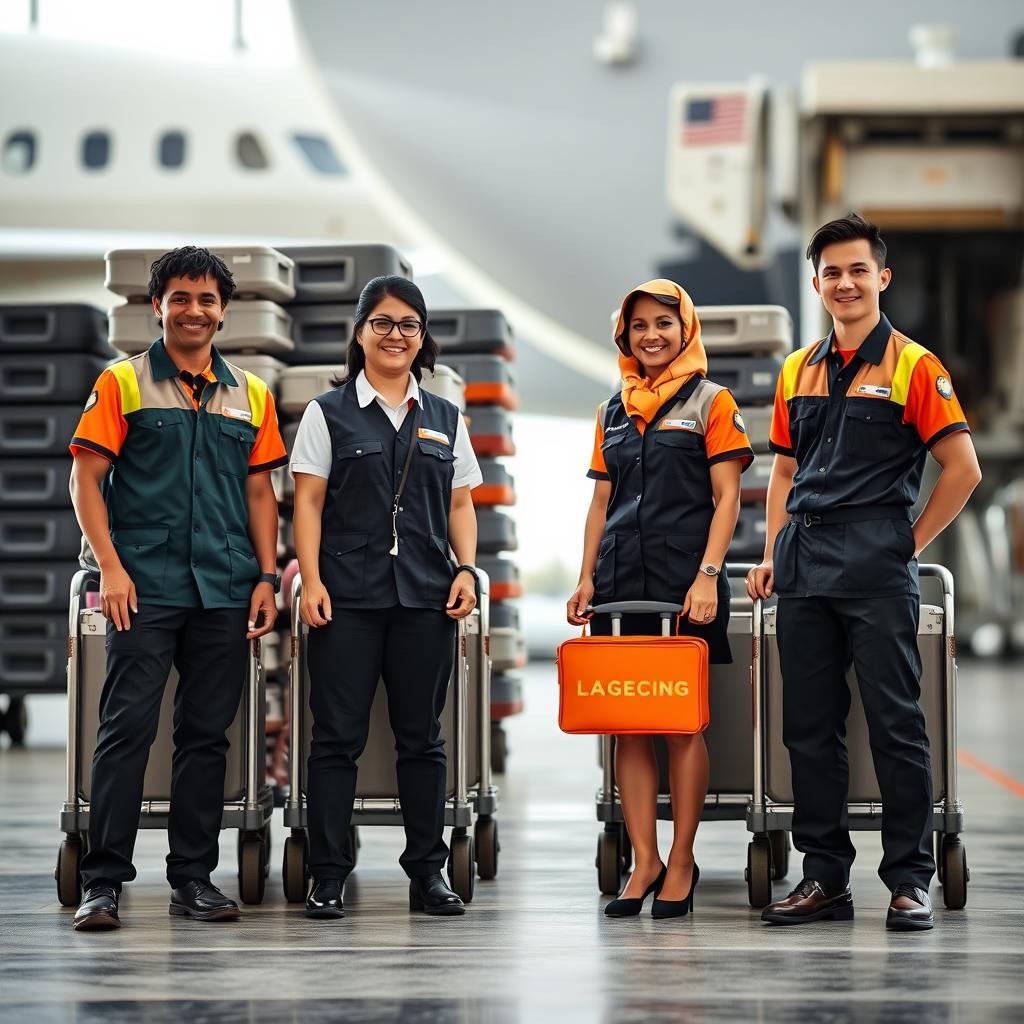Many people work behind the scenes to move your bags. Key roles include:
- Baggage Service Manager (Airline or Airport): Oversees all baggage operations at the airport. They coordinate with airlines, baggage handlers and the airport to implement the agreed SLAs and processes. At large airports, an airline might have a dedicated baggage operations manager.
- Station Operations Manager (Airline): In charge of the airline’s overall ground operations, including baggage. Ensures that check-in and ramp teams handle bags per the airline’s standards.
- Check-in/Bagdrop Agents: These airline or contracted staff at the counter or kiosk tag your bags, weigh them, and ensure tags are scanned into the system. They often help passengers with luggage issues at curbside or bag-drop desks.
- Ramp Agents and Baggage Handlers: Work on the tarmac and in the sorting room. They load and unload luggage on the aircraft, drive baggage carts, operate belt loaders, and move bags to/from the baggage system. In many countries, these are staff of a ground handling company under an SGHA (Standard Ground Handling Agreement) with the airline.
- Sorting Room Operators: In airports with automated baggage systems, technicians manage the conveyor controls and resolve jams or mis-sorts. They may also hand-inspect irregular items.
- Baggage Quality/Control Inspectors: Some airports employ QA staff who review mishandled-baggage reports, spot audit belt-loading procedures, and enforce safety/quality checks.
- Baggage Claim Agents: When bags miss their flight or get delayed, these agents handle passenger claims at the airline’s baggage office. They issue PIRs (Property Irregularity Reports) and coordinate bag delivery.
- Security Staff: Although not “airport baggage” employees per se, airport security screeners (often government personnel) ensure that all checked bags pass through X-ray or explosive detection before boarding. They work closely with airline staff if a bag must be opened for inspection.

Each of these roles is defined by contracts or IATA ground handling standards. For example, IATA’s ISAGO program and ground operations manuals specify that responsibilities should be clearly assigned. All baggage staff ultimately follow IATA resolutions and recommended practices (e.g. handling protocols in Res. 743 and RPs) so that processes align airport-wide (iata.org). In practice, larger airports have formal hierarchies (e.g. a “Baggage Supervisor” overseeing multiple ramp teams), while small airports may have staff wearing multiple hats. In any case, smooth communication (often via radios and flight announcements) keeps everyone coordinated. In fact, IATA requires that each airport form a Local Baggage Committee (LBC) to serve as the communication hub for all these teams (iata.org).


